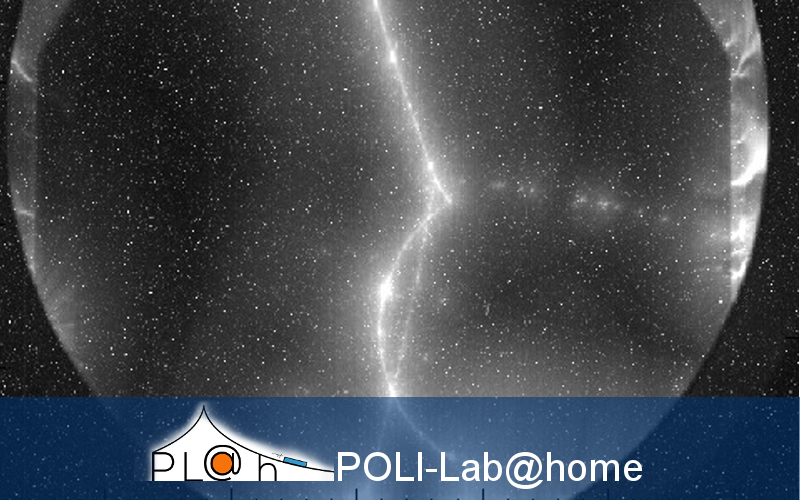Magnetic Force and Particle Physics

The ability to measure the linear momentum \( \vec{p}\) of a particle is a crucial issue for the advancement of the Physics of fundamental Interactions . Without this skill the analysis of experimental data would be extremely difficult and poor. For instance the Higgs Boson discovery would have been impossible.
In this post you will have the opportunity to learn how the momentum of a particle is determined both from a theoretical and a practical point of view. Thanks to an interactive application (see below) you will work on a real collision event between particles, and you will measure their momentum.
When you have completed this activity: 1) fill this form reporting your numerical results and impressions; 2) send a screenshot of the application with your complete analysis (including the three momenta vectors) in the section Homework of your Physics II course (with this file name: YourIdNumber_Particle.png or jpg).
The Application and how to use it.

This is the background image of the application you are going to work with. It shows the tracks of the charged particles moving in the detector.
Let’s start from the track at the bottom right. It is the track of a negative pion entering the detector from the right (\( \pi^-_{IN}\), marked in blu). The \( \pi^-\) moves inside the detector which is filled with \( He\) gas at atmospheric pressure. At the red spot, called the interaction vertex, the \( \pi^-_{IN}\) collides with an \( He\) nucleus of the detector. As a consequence the nucleus recoils gaining momentum (green arrow), the incoming pion is scattered upwards (\( \pi^-_{OUT}\), marked in orange).
Here you have the interactive application which is the environment of your activity; below you will find some Tutorials explaining how to use it in order to measure the momenta of the involved particles and to visualise them.
Fundamental information on the collision event \( (\pi^-,\,He)\):
- The tracks in the detector are caused by a ionization process. We are dealing with charged particles (the pion has a negative charge, the \( He\) nucleus has a double positive charge), therefore they ionize the gas. This detector does not “see” neutral particles!
- All the tracks are curved. This is why a Magnetic Force is acting on charged particles moving inside the detector,
- In fact, the detector is embedded in artificial uniform Magnetic Field, perpendicular to the plane of the image. The intensity of the field \(\vec{B}\) is shown in red at the top right of the application.
- We can evaluate the momentum \( \vec{p}\) from the Curvature Radius of each track. (This is deeply discussed in the Theoretical Section)
This short overview should be enough to understand some basic concepts in Particle Physics:
- Detectors are often embedded in strong magnetic fields \(\vec{B}\).
- The magnetic field is specifically conceived to curve the tracks of the charged particles.
- Once the charge of the particle is known, physicists can determine the momentum from the curvature radius of the track.
AIM OF THE ACTIVITY.
Basically you will use the application inorder to:
- Evaluate the curvature radii of the three particles involved in the collision event.
- From the evaluated radii, compute the momentum of the three paticles in 108 eV/c units.
- Visualize on the event image the momenta vectors before and after the interaction.
- Verifiy if the momentum conservation law still holds at nucelar and sub-nuclear scales.
The tutorials and the theoretical section that follow will guide you in doing the task.
Video Tutorial 1: How to measure the curvature radius of the tracks.
Video Tutorial 2: How to compute the momentum \( \vec{p}\) from the measured curvature radius.
Video Turorial 3: Conversion to the Units adopted in Particle Physics (\( \frac{eV}{c}\)) and how to display the momenta vectors.
If something doesn’t work in the application, just refresh the page.

Pay attention to the side wall of the detector chamber. As you can see in this picture, the part of the track of the outgoing pion in the green box is not to be considered. It’s a ionization occurred on the side wall of the chamber.
Remember to: 1) fill the form; 2) send a screenshot of the application with your complete analysis (including the three momenta vectors) in the section Homework of your Physics II course (with this file name: YourIdNumber_Particle.png or jpg).